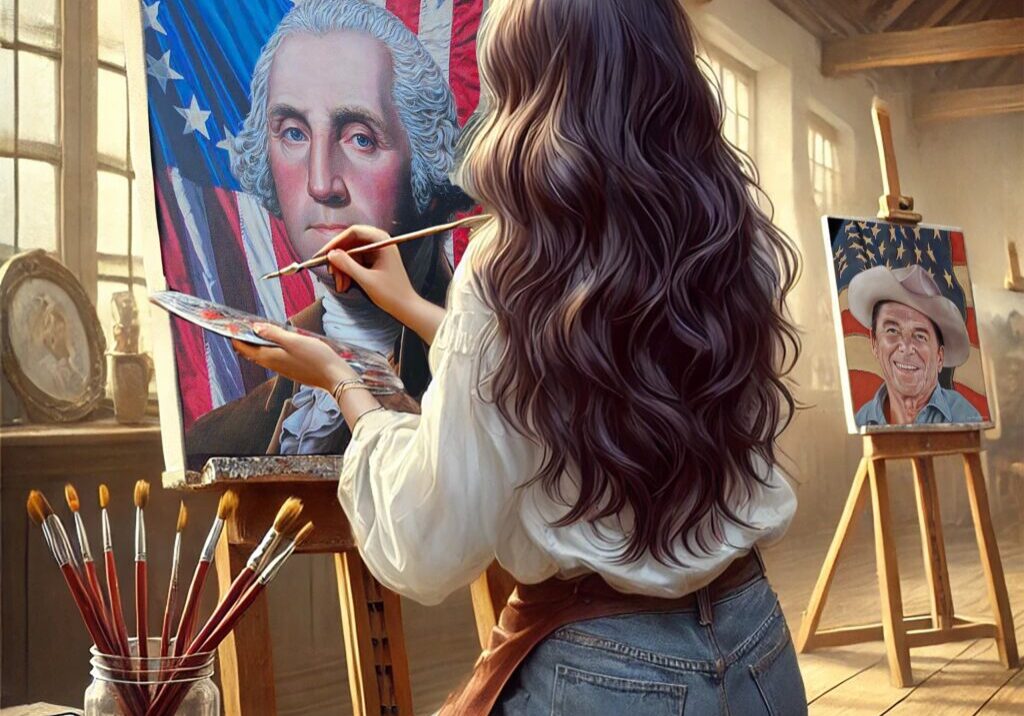
Powder, Patience, and Paint: How Colonial Artists Built Likeness in Layers
No one rushed a face in the eighteenth century. To paint a likeness that endured, artists began with powder, not paint. They prepared their own pigments, mixed in oils, stretched linen over wood frames, and waited. Days passed before the first colors ever touched skin. To render a portrait that breathed, the artist had to breathe with it. As I worked on the mural, I found myself falling into that same rhythm slow, deliberate, layered. It is the old way, and for good reason. Colonial artists like John Singleton Copley and Charles Willson Peale did not have access to ready-made tubes or pre-mixed palettes. They worked with hand-ground pigments: lead white, vermilion, ultramarine from crushed lapis. These powders shimmered with potential, but only when handled with precision. Pigment had to be balanced with oil, often linseed, and mixed to the perfect consistency. Too thick, and it dragged. Too thin, and it disappeared. The craft began long before the canvas saw color. The layering process itself was everything. First came the underdrawing, usually in charcoal or pencil, mapping out the structure. Then a monochrome underpainting followed, often in tones of grey or brown. This helped establish value, depth, and shadow. Over this dried layer, artists applied glazes thin, translucent coats of color that built form slowly. Each glaze required drying time. Each adjustment demanded care. Likeness did not emerge in a single sitting. It arrived in steps. This is the process I use in my own studio. Before the mural’s faces took shape, I laid in tonal values. I built the shadows beneath the eyes, the curve of a cheekbone, the slope of the jaw. Only then did I allow color to enter quietly at first. A warm ochre to suggest blood. A hint of cobalt along the temple. Glaze after glaze, letting the pigment sink and settle. I was not trying to paint quickly. I was trying to paint truthfully. In colonial portraits, this technique gave the skin a sense of life. Light did not sit on the surface. It moved through the layers, glowing from within. You can see it in Copley’s treatment of hands and in Peale’s soft transitions around the mouth. This is not theatrical lighting. It is quiet presence. It tells you that the sitter lived, breathed, and blinked beneath the brush. Patience was not only required. It was respected. Artists often worked in intervals, letting layers cure while sketching another client or preparing more canvas. A portrait might take months. Sometimes longer. This gave the artist time to adjust, observe, and refine. When I look at portraits from that era, I can see the hours pressed into them. The revisions made in silence. The days when no paint was applied, but everything still moved forward. Even the surface preparation mattered. Ground layers, called gesso, had to be sanded smooth. Edges were sealed. Canvas was tightened over stretchers. All of this supported the final image, even though none of it was seen. In my own work, especially on a project as large as the mural, this groundwork is sacred. It sets the tone. A hurried foundation leads to an unsettled finish. There is a temptation today to celebrate speed. To paint fast. To finish. But Revolutionary portraiture reminds us that likeness is not an act of capturing. It is an act of building. Each glaze is a conversation with the last. Each pigment is a promise to the next. Colonial artists understood this, even as their world shifted around them. And so, when I pick up my brush in the studio, I return to their method. I grind my colors. I wait for each layer to speak. Because to honor the faces of history, you must let them emerge on their own terms. One layer at a time.

